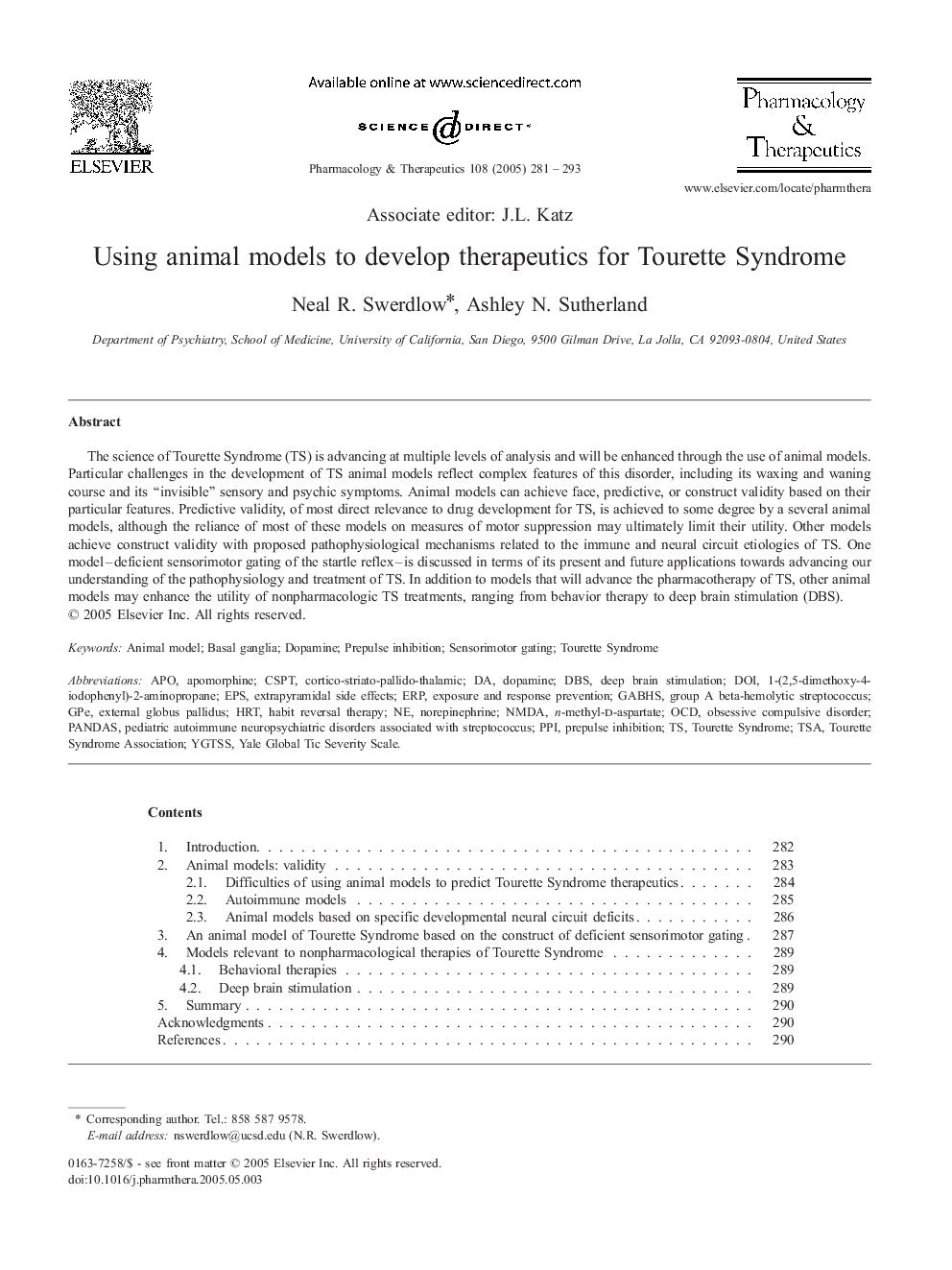| کد مقاله | کد نشریه | سال انتشار | مقاله انگلیسی | نسخه تمام متن |
|---|---|---|---|---|
| 9015856 | 1127575 | 2005 | 13 صفحه PDF | دانلود رایگان |
عنوان انگلیسی مقاله ISI
Using animal models to develop therapeutics for Tourette Syndrome
دانلود مقاله + سفارش ترجمه
دانلود مقاله ISI انگلیسی
رایگان برای ایرانیان
کلمات کلیدی
DBSOCDN-methyl-d-aspartateNMDAYGTSSDOIGPEPPIHRTEPSTSAYale Global Tic Severity ScaleGroup A beta-hemolytic streptococcus1-(2,5-dimethoxy-4-iodophenyl)-2-aminopropane - 1- (2،5-dimethoxy-4-iodophenyl) -2-aminopropaneexternal globus pallidus - globus pallidus خارجیapo - آپوApomorphine - آپومرفینObsessive compulsive disorder - اختلال وسواس فکریERP - برنامه ریزی منابع سازمانdeep brain stimulation - تحریک عمقی مغزExposure and response prevention - جلوگیری از قرار گرفتن در معرض و پاسخDopamine - دوپامینTourette syndrome - سندروم تورت، سندروم تورهbasal ganglia - عقدههای قاعدهایextrapyramidal side effects - عوارض جانبی ExtrapyramidalAnimal model - مدل حیوانیPrepulse inhibition - مهار پیش قاعدگیnorepinephrine - نوراپی نفرینPANDAS - پانداهاGABHS - گابنSensorimotor gating - گیت سنتر
موضوعات مرتبط
علوم پزشکی و سلامت
داروسازی، سم شناسی و علوم دارویی
داروشناسی
پیش نمایش صفحه اول مقاله

چکیده انگلیسی
The science of Tourette Syndrome (TS) is advancing at multiple levels of analysis and will be enhanced through the use of animal models. Particular challenges in the development of TS animal models reflect complex features of this disorder, including its waxing and waning course and its “invisible” sensory and psychic symptoms. Animal models can achieve face, predictive, or construct validity based on their particular features. Predictive validity, of most direct relevance to drug development for TS, is achieved to some degree by a several animal models, although the reliance of most of these models on measures of motor suppression may ultimately limit their utility. Other models achieve construct validity with proposed pathophysiological mechanisms related to the immune and neural circuit etiologies of TS. One model-deficient sensorimotor gating of the startle reflex-is discussed in terms of its present and future applications towards advancing our understanding of the pathophysiology and treatment of TS. In addition to models that will advance the pharmacotherapy of TS, other animal models may enhance the utility of nonpharmacologic TS treatments, ranging from behavior therapy to deep brain stimulation (DBS).
ناشر
Database: Elsevier - ScienceDirect (ساینس دایرکت)
Journal: Pharmacology & Therapeutics - Volume 108, Issue 3, December 2005, Pages 281-293
Journal: Pharmacology & Therapeutics - Volume 108, Issue 3, December 2005, Pages 281-293
نویسندگان
Neal R. Swerdlow, Ashley N. Sutherland,